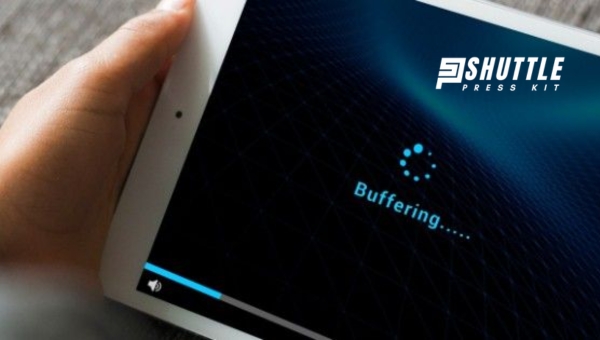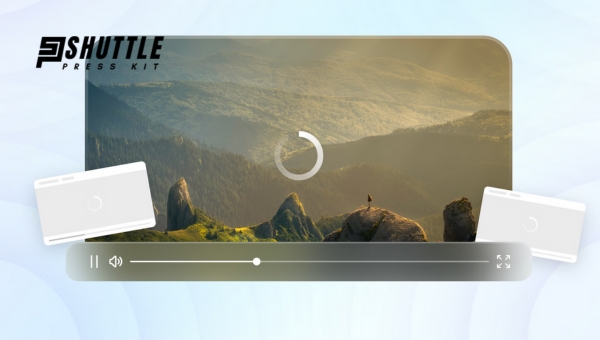Buffering videos got you down? We’ve all been there, staring at the screen while the little circle goes round and round. If you’re tired of waiting for your favorite shows to load, then this guide is what you need. Today, I’m going to dig into why buffering happens and provide simple solutions so that you can stop buffering in its tracks. Get ready to say goodbye to those annoying pauses!
One of the quickest ways to prevent video buffering is by improving your internet connection. This might mean upgrading your service plan for faster internet speed or minimizing the distance between your device and the Wi-Fi router. Closing other tabs and apps that use the internet can also help make sure more bandwidth is available for streaming your videos smoothly. Simple fixes like these can significantly improve your online video experience!
What is Video Buffering?
Video buffering is a common term encountered during streaming or playing online video content. This process involves pre-loading a certain amount of data before the video plays, ensuring a smooth playback experience without interruptions. The buffering process temporarily stores video data in the device’s memory (or cache) ahead of playback.

This technique helps mitigate issues related to internet connectivity or bandwidth fluctuations, aiming to provide an uninterrupted viewing experience for the user.
Furthermore, video buffering acts as a cushion against potential data transmission delays over the network. When a viewer experiences buffering, it usually means that the video is downloading and storing upcoming parts of the content so that play can continue smoothly without pausing for additional loading times.
Different streaming services and media players have varied approaches to how much content is buffered in advance, often adjusting in real-time based on the user’s internet speed to balance between immediate playback and minimizing pauses due to re-buffering.
Also Read: Amazon’s Project Kuiper vs Starlink: Showdown Unpacked
Exploring the Causes Behind Video Buffering
Video buffering can be a frustrating interruption to your streaming experience, affecting everything from casual viewing to important live events. It occurs when there’s a delay in video playback due to various factors, leading to pauses as the content loads. Understanding these reasons is crucial for troubleshooting and potentially minimizing buffering issues.

- Inadequate Internet Speed: Insufficient internet bandwidth is a primary culprit. Streaming high-quality videos requires a certain speed; if your connection falls below this threshold, buffering will likely occur.
- Server Capacity Overwhelmed: Popular videos or live streams attract many viewers simultaneously, which can overload the hosting server’s capacity, leading to delays and buffering for the audience.
- Suboptimal Video Encoding: Videos not properly encoded or optimized for different devices and internet speeds can struggle with seamless playback, causing more frequent stops and starts during streaming.
- High Traffic Volumes on Website: Websites experiencing heavy traffic may fail to stream video content efficiently, as their resources are stretched thin managing numerous concurrent requests.
- Out-of-date Browser or Media Player: Using older versions of web browsers or media players that aren’t aligned with current streaming technologies can result in poor playback performance.
- Low Device Memory: Devices with limited available memory or processing power might not cache incoming data fast enough for smooth video playbacks, particularly if they’re running multiple applications at once.
- Distance from Content Servers: The greater the physical distance between your device and the video hosting servers, the longer it takes for data to travel back and forth, raising the likelihood of buffering issues.
Adressing these factors may require actions such as upgrading your internet plan, closing other bandwidth-heavy applications during streaming or ensuring your hardware is up-to-date. Recognizing these common causes enables users to take proactive steps towards enhancing their viewing experience.
Also Read: Starlink vs HughesNet: Which Wins the Satellite Battle?
Effective Strategies to Overcome Video Buffering
Video buffering can disrupt your streaming experience, making it frustrating to watch your favorite shows or movies. However, with a few troubleshooting steps, you can significantly reduce or eliminate buffering issues and enjoy smoother video playback. Here are some effective strategies:

- Pause the Stream Temporarily: Give your video a short break by pausing it for a few minutes. This allows the buffer to build up and helps prevent interruptions.
- Close Unnecessary Applications: Ensure all background applications and downloads are closed to free up bandwidth and system resources for streaming.
- Restart Your Streaming App or Browser: Sometimes, simply restarting the app or browser where you’re experiencing buffering can resolve the issue.
- Opt for Lower Video Quality: High-definition streams require more bandwidth. Reduce the video quality in settings to alleviate buffering problems.
- Keep Your Apps Updated: Regularly update streaming apps like Netflix, YouTube, and Hulu to benefit from performance improvements and bug fixes.
- Limit Devices on Your Network: Disconnect other devices using your internet connection when not in use to avoid bandwidth congestion.
- Consider Wired Connections Over Wi-Fi: If possible, use an Ethernet cable for a more stable internet connection than Wi-Fi offers.
- Restart Your Modem or Router: This can refresh your internet connection and sometimes improve streaming performance.
Implementing these strategies should provide immediate improvement in dealing with video buffering during streaming sessions. Regular maintenance of your devices and network will also help ensure consistently smooth playback over time.
Also Read: Standard vs High Performance Starlink: Differences Explored
Strategies to Minimize Video Buffering for Content Publishers
In the competitive realm of digital content delivery, ensuring a smooth streaming experience is critical. Video buffering can significantly detract from viewer satisfaction, leading to a loss of audience and potential revenue. Below are tailored strategies for content publishers aiming to enhance the quality of their video streaming and minimize buffering incidents:

- Implement Adaptive Bitrate Streaming: This technology dynamically adjusts the video quality based on the viewer’s internet connection speed, delivering an optimal balance between quality and performance.
- Utilize a Content Delivery Network (CDN): Distributing your content across multiple servers globally can drastically reduce load times and improve accessibility by serving videos from locations nearest to each viewer.
- Optimize Video Encoding: Ensure videos are encoded efficiently before publication. Utilizing modern codecs can decrease file sizes without sacrificing quality, promoting faster loading times and reducing buffering.
- Choose Optimized Hosting Solutions: Investing in specialized video hosting platforms like Gumlet can further alleviate buffering issues with additional optimizations tailored specifically for video content.
By applying these steps diligently, publishers not only elevate the user experience but also bolster engagement and viewership loyalty in an ever-evolving digital landscape.
Also Read: Starlink Roam vs Starlink Residential: What’s Best for You?
Frequently Asked Questions
Why do videos buffer when streaming?
Buffering often happens due to slow internet speeds, high traffic on the video hosting site, or outdated devices.
Can changing the video quality reduce buffering?
Yes, lowering the video resolution can lessen buffering by reducing the amount of data your internet connection has to process.
Does using wired connections improve streaming?
Yes, using an Ethernet connection can provide a more stable and faster internet connection than Wi-Fi, reducing buffering.
How can clearing cache help?
Clearing your browser or app cache can remove old data that might be causing performance issues, including video buffering.
Conclusion
Effectively preventing internet video buffering issues significantly enhances your online streaming experience. By upgrading your internet plan, securing a stable connection, optimizing your device settings, or choosing the right time for streaming, you can ensure a smooth, uninterrupted viewing session. Always remember to check for any background applications or updates that might be consuming your bandwidth.
Additionally, consider clearing your browser’s cache or switching to a different browser to potentially alleviate buffering problems. Making these adjustments and being mindful of your internet’s capacity and how it’s being used can make a world of difference in your streaming quality. With these tips, you’re well-equipped to minimize buffering and maximize your enjoyment of streaming content.
